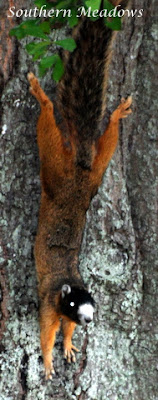More from the Rain Garden: Seashore Mallow
Seashore mallow (Kosteletzkya virginica) lights up the rain garden during the month of September with its parade of light pink flowers. Pollinators are all over it, sipping nectar and basking in the morning sunshine.
 |
| ruby throated hummingbird |
 |
| cloudless sulphur butterfly |
 |
| Eastern Tiger Swallowtail butterfly |
Carpenter bees are constant visitors. Coated in pollen, it is fascinating to watch them fly with all that pollen clinging to their abdomen.
 |
| carpenter bees |
In nature, seashore mallow grows in the brackish marshes along the southeastern seashore but they adapt well to a variety of garden conditions from rich, wet soil to normal garden soil. It is a stand out plant in our rain garden surrounded by other moisture loving perennials. Seashore mallow shares similar growing requirements with joe pye weed (Eutrochium spp.), iron weed (Vernonia spp.), and switch grass (Panicum virgatum) and would make great companions for a fall show of texture and flowers.
* * * For more on our rain garden see post on rain lilies (Zephyranthes atamasca) * * *
Below are four views of our seashore mallow shrub that grows in the rain garden bed at the front of our south facing home. This provides you with a 360 view of the shrub.
 |
| with Sisyrinchium angustifolium, and lavender (which will need to be transplanted to drier bed) |
 |
| Clethera alnifolia, Thelypteris kunthil, Zephyranthes atamasca, rudbeckia hirta and gaillardia |
 |
| with Spirea tomentosa, Stokesia laevis, Zizia aurea and Cercis canadensis |
 |
| with Iris versicolor, Iris cristata, Monarda punctata, Zephyranthes atamasca, Penstemon digitalis |
 |
| mid-summer view of bed |




.png)
